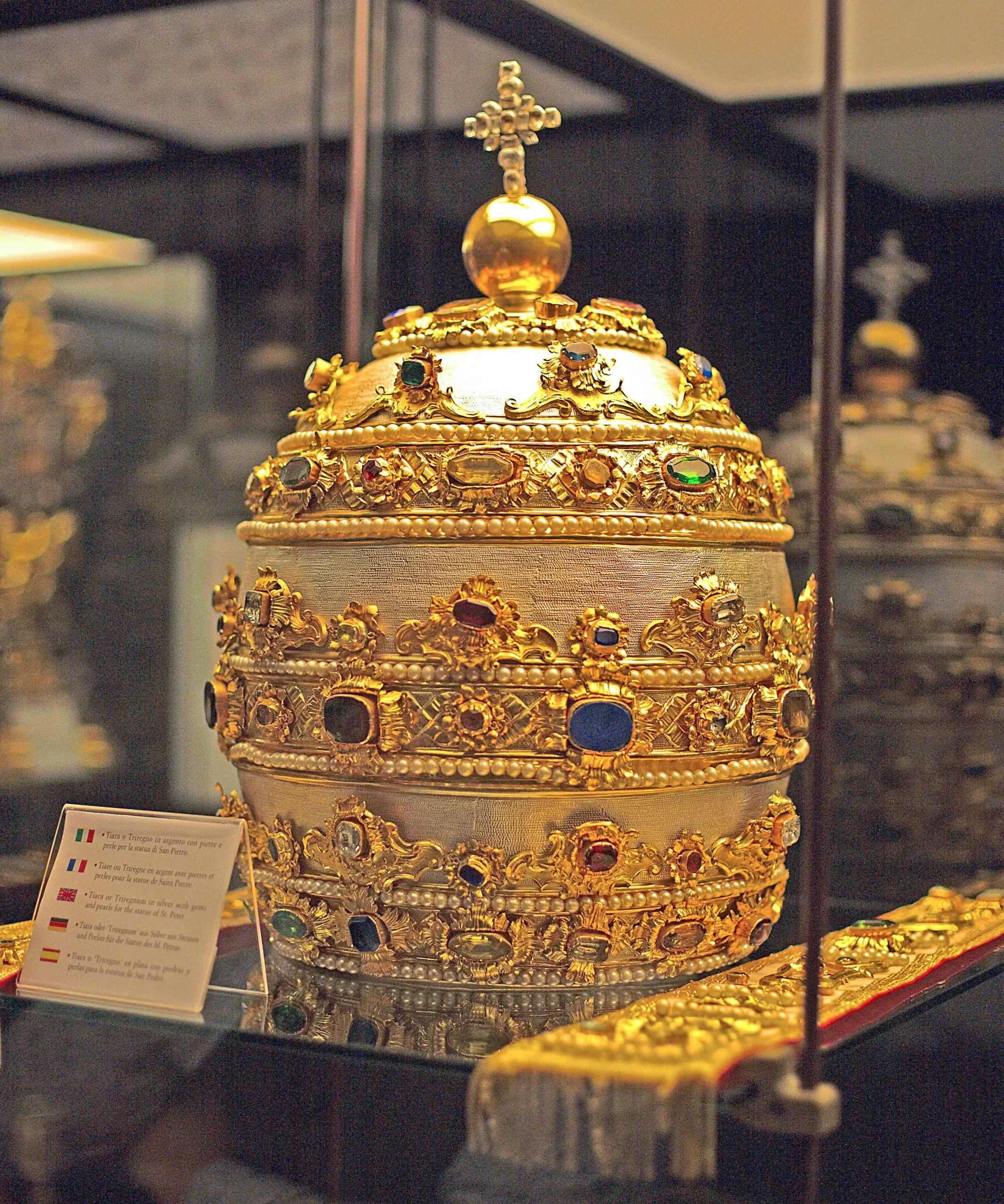
Introduction
The Papal Tiara, also known as the Papal Crown, is an iconic symbol of the Catholic Church. This elaborate headpiece, worn by popes from the 8th century until the mid-20th century, represents spiritual and temporal authority. This sacred, religious relic is possibly the most valuable antique in the Vatican.
Why Is the Papal Tiara Significant?
The Papal Tiara is more than just a ceremonial artifact—it signifies leadership, tradition, and the evolution of the papacy. Understanding its history sheds light on the Vatican’s transition from monarchic rule to modern spiritual leadership.
History and Evolution
The Papal Tiara evolved from a Phrygian cap, developing over centuries into a three-tiered crown known as the triregnum. Each tier represents a different role:
- Father of Kings – The Pope’s influence over Christian rulers.
- Governor of the World – Leadership in matters of faith and moral guidance.
- Vicar of Christ – A direct connection to spiritual authority.
Famous Papal Tiaras
Throughout history, popes commissioned unique gold and jewel-encrusted tiaras, such as:
- Tiara of Pope Gregory XIII (1572–1585) – The oldest surviving papal tiara.
- Napoleon Tiara (1804) – Gifted by Napoleon I, though rarely worn due to its weight.
- Spanish Tiara (1855) – A gift from Queen Isabella II of Spain, featuring 18,000 diamonds.
Decline and Symbolism
By 1963, Pope Paul VI became the last pope to wear the tiara, choosing a simpler inauguration ceremony instead of traditional coronation. This shift symbolized the Pope’s focus on spiritual service rather than political rule. Despite this change, the Papal Tiara remains an enduring symbol, appearing on:
- Vatican documents
- Official insignia
- Sacred artwork
Conclusion
The Papal Tiara is a testament to the rich history of the Catholic Church. While modern popes no longer wear it, its legacy continues to symbolize spiritual leadership, tradition, and the enduring power of faith.



